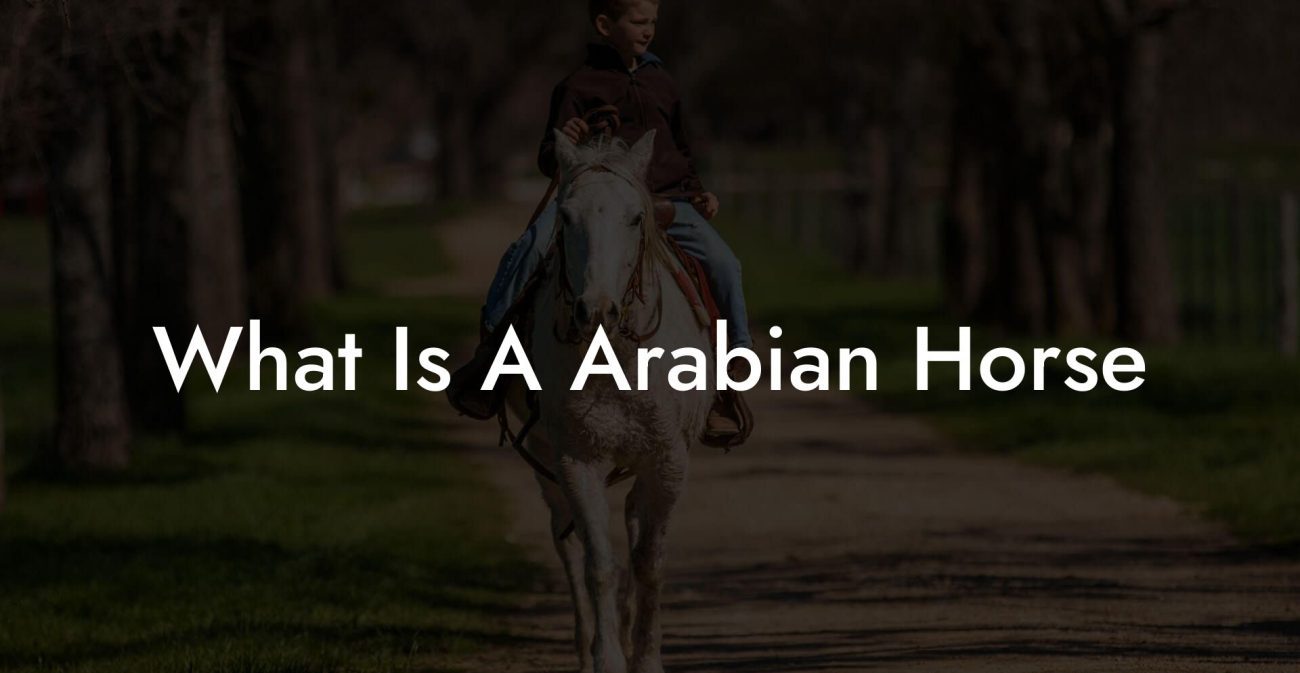Ever wondered why horse meat goes by so many names, or how the fascinating world of equine terminology connects culinary traditions with the art of horse care? Strap in as we gallop through history, culture, and nutrition to explore the multifaceted answer to “What Is Horse Meat Called?” This isn’t just a deep dive into nomenclature, it’s also a crash course for Gen-Z and millennial horse enthusiasts who want to understand everything from the plate to the pasture.
Quick Links to Useful Sections
- Understanding the Question: What Is Horse Meat Called?
- The Global Linguistic Landscape of Horse Meat
- Horse Meat Around the World: Culinary Traditions and Taboos
- A European Affair
- The Japanese Take: Basashi and Beyond
- North America and the Ethical Debate
- Nutritional Insights: Horse Meat vs. Traditional Meats
- The Cultural and Ethical Debate Surrounding Horse Meat
- Equine Culinary Terminology in the Digital Age
- Integrating Horse Meat in Modern Gastronomy: Tips for the Trendsetter
- Bridging the Gap: Horse Meat Terminology & Equine Care
- Practical Horse Care Tips: Feeding, grooming, and Beyond
- Feeding Your Horse Right
- Grooming: More Than Just a Spa Day
- Exercise and Mental Stimulation
- Regular Health Check-Ups
- Resources and Community Support: Your Next Steps
- Expert Insights: Voices from Chefs, Veterinarians, and Equestrian Enthusiasts
- Horse Meat: Balancing Culinary Curiosity with Equine Care Ethics
- Frequently Asked Questions About Horse Meat and Equine Care
- Your Journey Through the Equine World: Embrace Culinary Curiosity and Compassionate Care
Understanding the Question: What Is Horse Meat Called?
At its simplest, horse meat is exactly what it sounds like, the flesh of a horse. But beyond that obvious definition lies a colorful tapestry of names and connotations that differ from one language or culture to the next. Whether you’ve heard the term “chevaline” in a fine-dining magazine or “equine meat” while scrolling through your favorite food blog, the name you use can depend on context, culture, or even the intended culinary experience.
In many gastronomic circles, you might hear horse meat referred to as “chevaline.” Derived from the French word “cheval,” meaning horse, this term is often used in upscale, European contexts. Elsewhere, particularly in cultures where horse meat is a staple or a delicacy, you might come across names like “cavallo” (Italian), “caballo” (Spanish), or even “basashi”, the Japanese term for raw horse meat sashimi.
But why do these different names exist? The answer lies in the diverse cultural attitudes toward horses and culinary preferences that vary greatly from one region to another. As you continue reading, you’ll discover that the conversation around horse meat is as much about history and tradition as it is about taste and nutrition.
The Global Linguistic Landscape of Horse Meat
Language is a living reminder of our history and culture, and the words we use to describe horse meat are no exception. Around the world, the nomenclature reflects deep-rooted connections between humanity and horses. Depending on where you are, you might encounter several intriguing names:
- Chevaline: Often seen in European gourmet contexts, this elegant term is derived from the French “cheval” and is synonymous with sophistication.
- Equine Meat: A modern, clinical term, “equine” is used in academic and nutritional contexts, emphasizing the animal’s classification without emotional or cultural baggage.
- Cavallo: In Italy, horse meat is commonly referred to as “cavallo,” and it occupies a special place in regional dishes that balance tradition with contemporary culinary artistry.
- Caballo: In Spanish-speaking countries, this term not only translates directly to “horse” but also hints at the varied ways in which horse meat has found its way into regional cuisine.
- Basashi: Particularly famous in Japan, this name is tied to the culinary tradition of serving raw horse meat, appreciated for its tender texture and subtle flavor.
Each of these names carries its own set of associations and historical significance, reflecting local customs, dietary laws, and even economic factors. For instance, while horse meat is lauded as a delicacy and a nutritional powerhouse in some cultures, in others it remains controversial or even taboo.
Horse Meat Around the World: Culinary Traditions and Taboos
The culinary use of horse meat is a prime example of how culture shapes our food choices. In countries like France, Italy, and Japan, horse meat plays a proud role on the gastronomic stage, celebrated for its lean profile, rich flavor, and high nutritional value. Let’s take a closer look:
A European Affair
In parts of Europe, especially in France and Italy, horse meat is seen as a rare and refined ingredient. Restaurants might serve delicacies such as horse tartare or slow-cooked horse stew, elevating the meat to an art form. Chefs here are not only concerned with taste but also with the sustainability and ethical sourcing of their ingredients.
The term “chevaline” often appears on menus, hinting at the European tradition of culinary excellence. For a generation that values authenticity and quality, Gen-Z and millennials alike, this focus on quality ingredients and ethical practices resonates strongly.
The Japanese Take: Basashi and Beyond
In Japan, the practice of serving raw horse meat, known as basashi, provides an entirely different culinary experience. Thinly sliced and delicately seasoned, basashi is typically served with soy sauce, ginger, and wasabi. It’s a dish that melds the contemporary with tradition, appealing to adventurous eaters and those intrigued by international cuisines.
Japanese culinary culture is renowned for its attention to natural flavors and presentation, making basashi a favorite among those who appreciate minimalism and purity in food. For the culturally savvy millennial, trying basashi can be an exciting exploration of a cuisine that challenges the status quo.
North America and the Ethical Debate
In North America, the conversation around horse meat is complex and emotionally charged. While many people express discomfort with the idea of consuming a food traditionally associated with companionship and recreation, there are also communities and culinary circles that advocate for its nutritional benefits and sustainable production practices.
This contrast in viewpoints has spurred robust debates online and in cultural forums, attracting the attention of Gen-Z and millennials who are particularly active on social media and passionate about ethical food sourcing. Whether you’re a foodie, an activist, or simply curious about global culinary practices, the multifaceted world of horse meat offers something for everyone.
Nutritional Insights: Horse Meat vs. Traditional Meats
Horse meat isn’t just noteworthy for its diverse names, it also brings a distinct nutritional profile to the table. In an era where healthy eating and sustainability take center stage, horse meat has earned a reputation as a lean, protein-rich, and flavorful alternative to more traditional meats like beef or pork.
Here are a few key nutritional points that set horse meat apart:
- Lean Protein Source: Horse meat tends to be lower in fat and cholesterol while still packing in a high-quality protein punch. This makes it an attractive option for health-conscious consumers.
- Rich in Iron and B Vitamins: It offers a generous helping of iron, which is crucial for energy levels, and B vitamins that play a key role in maintaining overall health.
- Omega Fatty Acids: Although not as abundant as in fish, horse meat does contain beneficial fatty acids that support heart health.
- Sustainability Factor: In regions where horse meat is produced responsibly, the environmental impact tends to be lower compared to some conventional livestock farming methods.
For those who are knee-deep in the world of modern nutrition and ethical eating, horse meat represents a convergence of taste, health, and sustainable sourcing. Whether you’re a curious foodie or someone dedicated to animal care, understanding these nutritional nuances can enrich your appreciation for equine culinary traditions.
The Cultural and Ethical Debate Surrounding Horse Meat
It would be a disservice not to address the complex ethical debates surrounding horse meat. In many societies, horses are cherished as pets, companions, or even working partners, and translating that into a food product can be emotionally charged. Here, tradition, sentiment, and modern ethics collide.
On one side of the debate, proponents argue that horse meat is a valuable source of lean protein and, when sourced ethically, supports sustainable agricultural practices. They point out that in many parts of the world, horses have historically been raised for both work and consumption.
On the other hand, there are cultural and emotional reservations that cannot be ignored. For communities where horses are seen as noble or sacred creatures, the idea of horse meat is unsettling. These differing perspectives are often amplified online, where passionate discussions about food ethics, animal rights, and cultural identity take center stage.
For Gen-Z and millennials, who frequently engage in discussions about sustainability and ethical consumerism, understanding these debates is crucial. The conversation isn’t just about what we eat, it’s about the values we hold and the respect we give to the animals that share our world.
Equine Culinary Terminology in the Digital Age
In an era dominated by search engines, social media, and digital communities, the way we talk about horse meat has evolved. Keywords and digital content play a massive role in unifying historical context with modern trends. Terms like “horse meat recipe,” “equine nutrition,” or even “sustainable horse farming” often pop up in online discussions.
Content creators, from food bloggers to equine care experts, need to use these search-friendly terms to connect with a global audience. Whether it’s a riveting YouTube video recipe or a detailed blog post on how to care for a horse, these keywords help bridge the gap between culinary curiosity and practical advice.
Search engine optimization (SEO) in the equine niche requires a delicate balance between culinary history and modern horse care. For millennials and Gen-Z, who are experts at sifting through online content for authenticity and value, the integration of thoughtful keywords with engaging narratives can transform a simple question, “What is horse meat called?”, into a comprehensive resource.
Integrating Horse Meat in Modern Gastronomy: Tips for the Trendsetter
For those looking to experiment with horse meat in their culinary repertoire, here are some tips to ensure a successful and respectful integration of this unique protein:
- Source Responsibly: Seek out suppliers who adhere to ethical and sustainable practices. Transparency in sourcing is key, especially when dealing with an ingredient that stirs both passion and controversy.
- Experiment with Recipes: Explore traditional recipes from regions where horse meat is celebrated. Whether it’s a slow-cooked stew, a tartare preparation, or even raw dishes like basashi, authenticity is the ticket.
- Pair Wisely: Lean horse meat pairs beautifully with ingredients that complement its delicate flavor. Think in terms of fresh herbs, aromatic spices, and robust vegetables that enhance rather than overpower the meat’s natural taste.
- Embrace Storytelling: Every dish tells a story, share the cultural and historical significance of horse meat in your culinary creations. This not only enhances the dining experience but educates your audience.
- Engage with the Community: Social media is brimming with passionate food enthusiasts and equine care advocates. Use hashtags and SEO-friendly keywords like “#EquineCuisine” and “#SustainableHorseFarming” to join the global conversation.
These modern gastronomic tips not only help in preparing horse meat dishes, but they also create an opportunity to discuss broader contexts such as sustainable animal care and the balance between culinary innovation and ethical responsibility.
Bridging the Gap: Horse Meat Terminology & Equine Care
While our discussion of horse meat nomenclature and culinary trends might seem starkly different from horse care, the two are more interconnected than you might think. Understanding the life of horses, from beyond being a protein source to appreciating their role as companions, athletes, and work partners, can dramatically shape how we care for these magnificent creatures.
When you care for a horse, you’re embracing a living, breathing being with needs that span nutrition, exercise, and emotional well-being. The respectful language used to describe horse meat in culinary contexts often mirrors the care that goes into raising and nurturing horses. For instance, ethical considerations in both horse meat production and equine care emphasize transparency, sustainability, and compassion.
Whether you’re a culinary adventurer curious about the taste of “chevaline” or an equine care enthusiast determined to provide the best for your horse, understanding the nuances of equine terminology is an essential bridge between two worlds that may seem disparate but share common values of respect and sustainability.
Practical Horse Care Tips: Feeding, grooming, and Beyond
For all the equine enthusiasts out there, especially the Gen-Z and millennial crowd, caring for your horse is as much about practical day-to-day routines as it is about embracing a respectful, ethical relationship with your animal. Here are some tried-and-true tips that can help keep your horse thriving:
Feeding Your Horse Right
Much like how culinary experts source the best cuts of meat, a healthy horse starts with the right nutrition. Ensure your horse’s diet includes:
- High-Quality Forage: Grass, hay, and silage should form the foundation of their diet.
- Balanced Grains: Incorporate grains and supplements as recommended by your veterinarian to meet your horse’s energy needs.
- Regular Hydration: Fresh, clean water is as essential as the meticulous sourcing of ingredients in a high-end dish.
A well-fed horse not only performs better but also reflects the care and responsibility of its owner.
Grooming: More Than Just a Spa Day
Grooming goes beyond aesthetics; it’s a vital part of maintaining a horse’s health. Regular grooming sessions help prevent skin issues, build trust, and allow you to spot potential health concerns early. Whether you’re brushing out their mane or cleaning their hooves, treat grooming as quality time, a chance to bond with your equine friend.
Exercise and Mental Stimulation
Exercise isn’t just for us humans, horses need regular movement to stay fit and mentally sharp. Mixing up activities like trail rides, arena work, and even interactive games can provide much-needed physical and mental stimulation. Just as a balanced diet fuels a healthy body, varied activities keep your horse’s spirit and mind engaged.
Regular Health Check-Ups
Just as anyone would monitor changes in their personal nutrition or fitness routine, regular visits from a trusted veterinarian ensure your horse remains in peak condition. Routine check-ups can catch issues before they become serious, ensuring a long and happy life for your equine companion.
These practical care tips not only improve the quality of life for your horse but also enhance your understanding of the broader equine ecosystem. It’s all about balance, just as we balance tradition with innovation when discussing horse meat nomenclature, caring for your horse involves merging old-school wisdom with modern best practices.
Resources and Community Support: Your Next Steps
So, what’s next for you on this journey through equine culinary terminology and horse care? Whether you’re diving into the culinary world of horse meat or rolling up your sleeves to better care for your equine companion, a wealth of resources and community support awaits.
Check out online communities and forums where like-minded horse enthusiasts exchange tips on everything from nutritional facts to the best grooming hacks. Follow influential equine care blogs and culinary channels dedicated to sustainable practices and ethical consumption. Local equestrian centers, veterinary clinics, and even organic farmers’ markets can provide further insights and hands-on workshops that bridge the gap between theory and practice.
As you explore, don’t miss out on interactive webinars or social media Q&A sessions hosted by experts in both equine nutrition and culinary arts. Engaging with these communities not only enriches your knowledge but also helps you support a culture of transparency and ethical living, both in your kitchen and in your stable.
Your next steps might include reading recent research on sustainable horse care, attending a virtual cooking class featuring international horse meat recipes, or simply joining a local equestrian group. Embrace every resource as a stepping stone toward a deeper understanding of the multifaceted world of horses, where culinary history meets animal care in a celebration of life, nourishment, and mutual respect.
Expert Insights: Voices from Chefs, Veterinarians, and Equestrian Enthusiasts
To truly understand the conversation around horse meat and effective horse care, it helps to listen to those on the frontlines. Chefs in Europe are reinventing recipes using horse meat, giving them an upscale twist without losing the essence of cultural tradition. Meanwhile, veterinarians and equine caretakers emphasize that ethical treatment and nutritional balance are essential for a healthy horse.
Industry experts unanimously agree that whether you’re discussing “chevaline” as a gourmet ingredient or learning the best way to feed and groom your horse, honesty, sustainability, and respect are the ultimate guiding principles. Their combined experience offers invaluable insight: that every aspect of the equine world, from the animal’s life to the names we use to describe it, is interlinked, creating a vibrant ecosystem of care, innovation, and tradition.
Horse Meat: Balancing Culinary Curiosity with Equine Care Ethics
In today’s fast-paced world, where food trends and animal care practices evolve rapidly, it can be challenging to keep up with changing narratives. Horse meat, with its rich cultural backdrop and its sophisticated culinary applications, is a case in point. Its multiple names and myriad uses spark debates that span from the dinner table to the stable.
For the modern consumer, particularly those who identify as Gen-Z or millennial, the balance between savoring innovative food experiences and upholding ethical animal care is paramount. Educate yourself on the diverse cultural contexts of horse meat, appreciate the sensitivity of using such names, and always champion practices that prioritize sustainability and transparency.
As you sift through recipes, watch culinary shows, or even engage with local communities on horse care, remember: the language we use matters. It shapes perceptions, builds communities, and ultimately reflects the values we hold dear. So whether it’s “chevaline,” “cavallo,” or simply “equine meat,” let your journey be one marked by curiosity, compassion, and a commitment to ethical practices.
Frequently Asked Questions About Horse Meat and Equine Care
Below are some frequently asked questions that explore the many facets of horse meat nomenclature and responsible equine care. Whether you’re here to impress your friends with your culinary vocabulary or to pick up expert tips for your horse’s well-being, these FAQs have you covered.
1. What is the most common term used for horse meat?
The term “horse meat” is widely understood, but you may also encounter “chevaline” in gourmet settings or “equine meat” in nutritional and academic contexts.
2. Why are there so many different names for horse meat?
Different cultures have their own culinary traditions and histories involving horses, which is why you’ll find names like “cavallo” (Italian), “caballo” (Spanish), and “basashi” (Japanese). These variances reflect local customs, language, and culinary practices.
3. Is horse meat nutritionally superior to other meats?
Horse meat is considered to be leaner and high in quality protein, rich in iron and B vitamins, making it a nutritious alternative to more traditional meats.
4. Are there ethical concerns about consuming horse meat?
Yes, ethical debates about horse meat are common. Many people view horses as companions rather than livestock, while others argue that ethically sourced horse meat supports sustainable agricultural practices.
5. How does horse care relate to the discussion of horse meat?
Understanding horse care practices can provide insights into ethical livestock management. Good equine care ensures horses live healthy lives, whether they are part of a companion animal community or, in certain cultures, raised for meat.
6. Can I apply the principles of equine care to improve my horse’s well-being?
Absolutely. Proper nutrition, regular grooming, consistent exercise, and regular veterinary check-ups are essential practices to keep your horse in top condition.
7. What resources can help me learn more about both horse meat and caring for horses?
There are many online forums, blogs, and local equestrian centers that offer resources on sustainable horse farming, culinary uses of horse meat, and comprehensive guides to horse care.
8. How do cultural perceptions affect the naming of horse meat?
Cultural perceptions play a major role in naming conventions. Societies that have deep historical ties to horses, whether as work partners or sacred animals, develop nuanced language that reflects both reverence and culinary creativity.
Your Journey Through the Equine World: Embrace Culinary Curiosity and Compassionate Care
The adventure of exploring “What Is Horse Meat Called?” goes far beyond simple definitions, it’s an invitation to delve into a world where language, culture, cuisine, and care intersect. By understanding the diverse names for horse meat, you not only enhance your culinary vocabulary but also gain insights into centuries-old traditions and modern ethical debates that continue to shape global perspectives.
As you navigate through recipes that celebrate gourmet elegance and forums that passionately discuss equine health, remember that every term, from “chevaline” to “equine meat”, carries a legacy. It’s a legacy that honors a deep connection between humans and horses, bridging the gap between the dinner table and the stable.
Whether you’re looking to impress friends with your newfound culinary lingo or you’re a dedicated horse owner eager to provide the best care for your equine companion, let this resource serve as both a practical guide and an inspiring exploration. Here, every section, every tip, and every expert insight is designed to spark curiosity, encourage informed conversations, and promote a future where ethical practices and culinary innovation go hand in hand.
Embrace this journey with an open mind and a compassionate heart, after all, true knowledge comes from understanding all facets of a subject, whether you’re savoring a bite of horse meat or ensuring your horse’s well-being with top-notch care. Let this be your starting point, your community hub, and your inspiration to explore the multifaceted world of equine culture in all its respectful, delicious glory.













